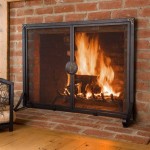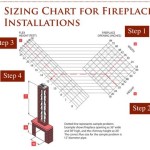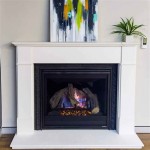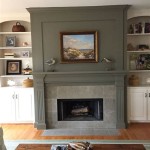Pellet Insert For Fireplace: A Comprehensive Guide
A pellet insert for fireplace represents a popular heating alternative, offering a blend of efficiency, convenience, and environmental responsibility. These inserts are designed to fit directly into an existing fireplace, converting a traditional wood-burning fireplace into a modern, clean-burning heat source. This article delves into the various aspects of pellet inserts, including their functionality, advantages, installation, maintenance, and considerations for choosing the right model.
Fireplaces have long been a focal point of homes, providing warmth and ambiance. However, traditional wood-burning fireplaces often suffer from inefficiency. A significant portion of the heat generated escapes up the chimney, resulting in energy waste and increased heating costs. Furthermore, wood burning can contribute to air pollution. Pellet inserts offer a solution to these problems by providing a more controlled and efficient heating process.
Pellet inserts operate by burning compressed wood or biomass pellets. These pellets are typically made from recycled wood waste, such as sawdust and wood shavings. This makes them a sustainable fuel source, reducing reliance on fossil fuels and minimizing environmental impact. The pellets are automatically fed from a hopper into a burn pot, where they are ignited. A fan circulates the heated air throughout the room, providing consistent and controlled warmth. The combustion process is carefully managed to maximize efficiency and minimize emissions.
Key Advantages of Pellet Inserts
Pellet inserts offer several key advantages over traditional wood-burning fireplaces and other heating systems. These advantages contribute to their growing popularity among homeowners seeking efficient and environmentally friendly heating solutions.
High Efficiency: One of the most significant benefits of pellet inserts is their high efficiency. Unlike traditional fireplaces, which can lose a significant amount of heat through the chimney, pellet inserts are designed to maximize heat output. Most modern pellet inserts boast efficiency ratings of 75% to 85% or even higher. This means that a greater percentage of the energy contained in the pellets is converted into usable heat, resulting in lower fuel consumption and reduced heating costs. The controlled combustion process ensures that the pellets burn completely, minimizing waste and maximizing energy extraction.
Convenience and Ease of Use: Pellet inserts offer a level of convenience that is difficult to achieve with traditional wood-burning fireplaces. The automatic pellet feeding system eliminates the need for frequent wood loading. Homeowners simply fill the hopper with pellets, and the insert automatically feeds the fuel into the burn pot as needed. Many models also feature programmable thermostats, allowing users to set desired temperature levels and automatically adjust the heat output. This eliminates the need for constant monitoring and manual adjustments. Furthermore, pellet inserts produce significantly less ash than wood-burning fireplaces, reducing the frequency of cleaning.
Environmental Benefits: Pellet inserts are a more environmentally friendly heating option compared to traditional wood-burning fireplaces and fossil fuel-based heating systems. The pellets are typically made from renewable wood waste, reducing reliance on finite resources. The controlled combustion process minimizes emissions, resulting in cleaner air quality. Pellet inserts meet stringent emission standards set by regulatory agencies, ensuring that they contribute minimally to air pollution. By using pellet inserts, homeowners can reduce their carbon footprint and contribute to a more sustainable environment.
Consistent Heat Output: Unlike wood-burning fireplaces that require constant tending to maintain a consistent heat output, pellet inserts offer a more stable and predictable heating experience. The automatic pellet feeding system ensures a continuous supply of fuel, maintaining a consistent flame and heat output. This eliminates the temperature fluctuations that are common with wood-burning fireplaces, providing a more comfortable and consistent heating environment.
Installation Considerations
The installation of a pellet insert requires careful planning and adherence to safety regulations. While some homeowners may be tempted to attempt a DIY installation, it is generally recommended to hire a qualified professional to ensure proper and safe installation.
Professional Installation: Hiring a certified installer ensures that the pellet insert is installed correctly and safely. A professional installer will have the necessary expertise and tools to handle all aspects of the installation process, including the preparation of the fireplace, the connection of the venting system, and the electrical wiring. A professional installation also ensures that the pellet insert complies with all local building codes and safety regulations.
Fireplace Preparation: Before installing a pellet insert, the existing fireplace must be thoroughly cleaned and inspected. Any loose bricks or mortar should be repaired to ensure the structural integrity of the fireplace. The chimney should also be inspected and cleaned to remove any creosote buildup, which can pose a fire hazard. The installer will typically install a stainless steel liner inside the existing chimney to provide a proper venting system for the pellet insert.
Venting System: A proper venting system is crucial for the safe and efficient operation of a pellet insert. The venting system is responsible for directing the exhaust gases produced during combustion outside the home. Pellet inserts typically require a specialized venting system made of stainless steel or other heat-resistant materials. The venting system must be installed according to the manufacturer's instructions and local building codes to ensure proper ventilation and prevent the buildup of harmful gases inside the home.
Electrical Connection: Pellet inserts require an electrical connection to power the auger, blower fan, and control panel. The electrical wiring must be installed by a qualified electrician to ensure safety and compliance with electrical codes. A dedicated circuit may be required to provide sufficient power to the pellet insert. It is essential to ensure that the electrical connection is properly grounded to prevent electrical hazards.
Maintenance and Care
Regular maintenance is essential for ensuring the optimal performance and longevity of a pellet insert. Proper maintenance involves cleaning, inspecting, and servicing the insert on a regular basis.
Regular Cleaning: Regular cleaning is essential for maintaining the efficiency and safety of a pellet insert. The burn pot should be cleaned regularly to remove ash and clinkers, which can impede airflow and reduce combustion efficiency. The ash pan should also be emptied regularly to prevent ash buildup. The venting system should be inspected and cleaned at least once a year to remove any creosote buildup. A clean venting system ensures proper ventilation and reduces the risk of chimney fires.
Annual Inspection and Servicing: An annual inspection and servicing by a qualified technician is recommended to ensure the proper functioning of the pellet insert. A technician will inspect all components of the insert, including the auger, blower fan, and control panel. They will also clean and lubricate moving parts to ensure smooth operation. The technician will also check the venting system for any leaks or damage. An annual inspection can identify potential problems early on, preventing costly repairs and ensuring the safe operation of the pellet insert.
Pellet Quality: The quality of the pellets used in the insert can significantly impact its performance and longevity. It is important to use high-quality pellets that are specifically designed for pellet stoves and inserts. Low-quality pellets may contain excessive moisture or ash, which can reduce combustion efficiency and increase the frequency of cleaning. Look for pellets that are certified by the Pellet Fuels Institute (PFI) to ensure that they meet industry standards.
Proper Storage of Pellets: Proper storage of pellets is essential for maintaining their quality and preventing moisture absorption. Pellets should be stored in a dry, well-ventilated area away from direct sunlight and moisture. Avoid storing pellets in damp basements or garages, as moisture can cause them to break down and become unusable. A dedicated pellet storage container or bin can help protect the pellets from moisture and pests.
In conclusion, pellet inserts offer a modern and efficient way to heat homes using existing fireplaces. Understanding their advantages, installation requirements, and maintenance needs is crucial for making an informed decision and ensuring the long-term performance of the insert.

Pellet Fireplace Inserts Lopi Stoves Made In Usa

Pellet Fireplace Inserts Lopi Stoves Made In Usa

Pellet Fireplace Inserts Lopi Stoves Made In Usa

Pellet Fireplace Inserts Complete Home Concepts

Pellet Burning Fireplace Inserts Sierra Hearth And Home

Pellet Stove Inserts The 1 Fireplace

Wood Stoves Pellet Gas Fireplace Inserts

Pellet Stove Inserts Turn Drafty Fireplaces Into Heaters Complete Home Concepts

Fireplace Insert Installation Wood Inserts Gas Pellet And Electric

Enviro Meridian Fireplace Insert Friendly Fires
Related Posts








